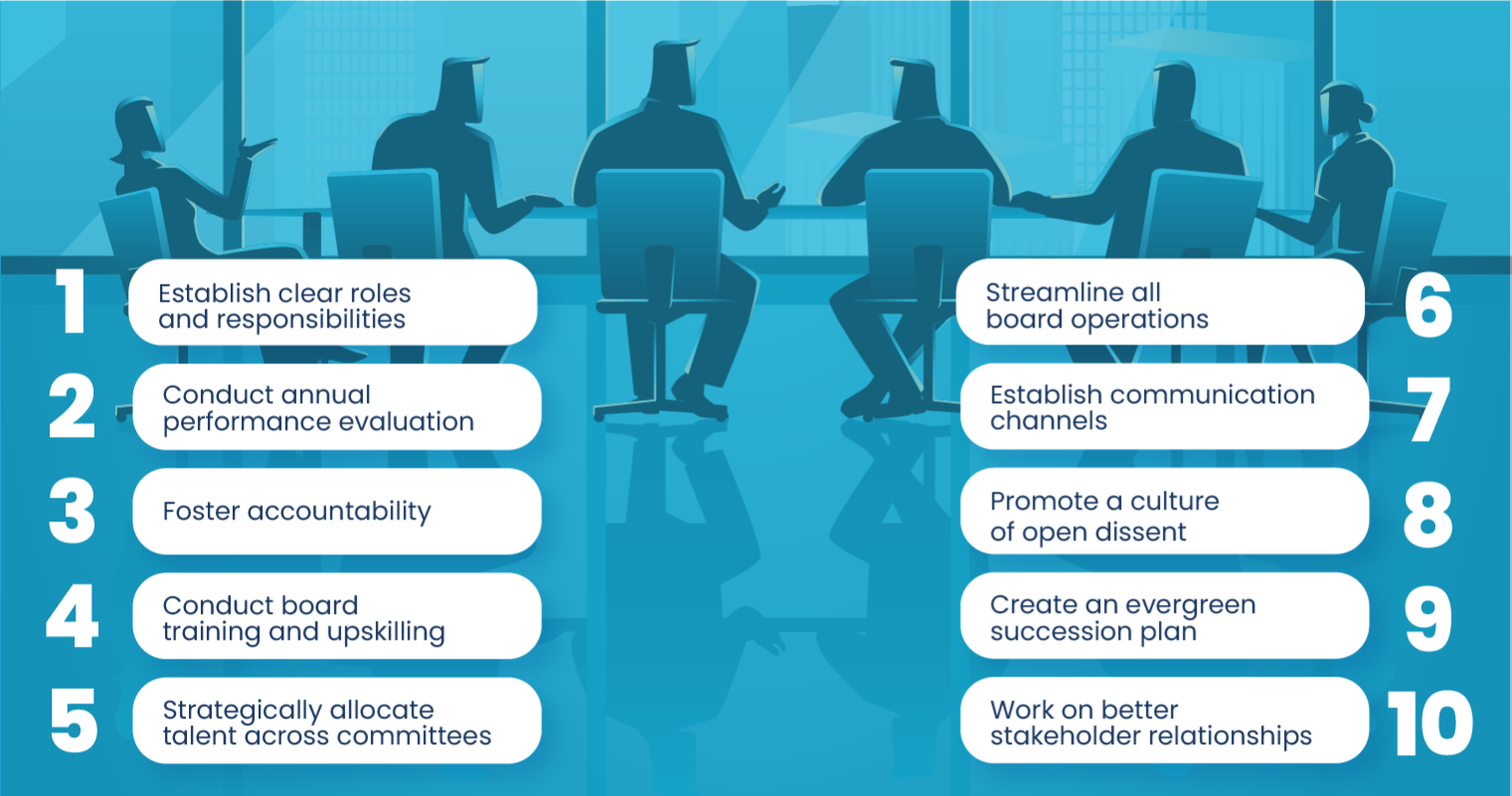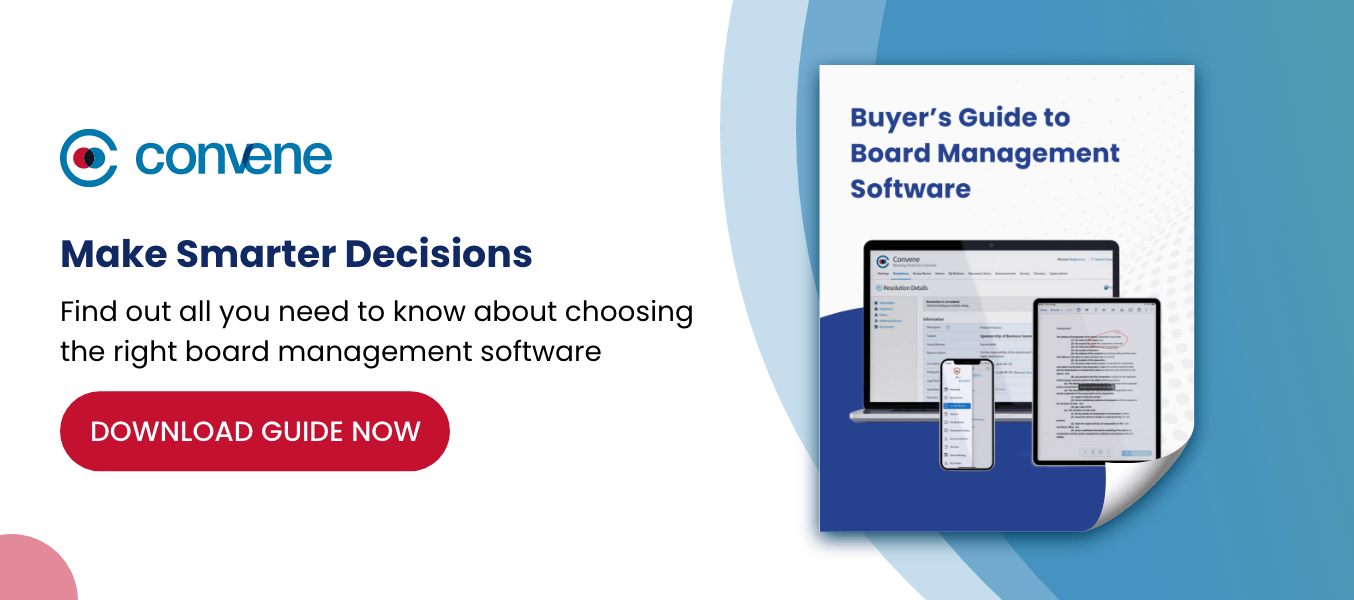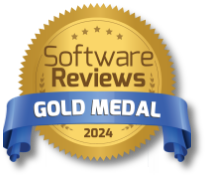A high-performing board is recognized as a critical determinant of organizational success. The tricky part, however, is the dynamics of board management which is essential for effective performance. It has evolved in response to various factors: increasing complexity in the global markets, heightened regulatory scrutiny, and growing demand for corporate transparency.
A study by Harvard Business Review suggests that top-performing boards are more likely to engage in enterprise risk review, board refreshment activities, and crisis management scenario planning. However, these high-performing boards are not made by accident. They come from a lot of effort in terms of getting the right people, creating the right processes, and building the right dynamics and culture.
This article explores the importance of board management and the board best practices you should follow.
What is board management?

Board management refers to the oversight and governance of an organization by its board of directors. This often involves setting strategic direction, upholding transparency and accountability, and representing the interests of shareholders. Other key responsibilities include financial reporting, audit oversight, and stakeholder engagement
How do board management and board effectiveness improve corporate performance?
As mentioned above, high-functioning boards are the driving force behind corporate success. With the right management, boards can improve corporate performance by:
- ensuring alignment between management and strategic goals,
- promoting effective oversight of financial and operational risks, and
- driving accountability through regular performance evaluations.
Moreover, an Ernst & Young’s (EY) report also highlights the significant role of well-managed boards in driving organizational success. Some of the determining factors include:
- Board composition: Effective boards that regularly refresh their membership to incorporate new perspectives and competencies. Well-composed and diverse boards are more adept at providing strategic guidance. Hence, leading to improved company performance.
- Roles and responsibilities: Clear delineation of roles and responsibilities ensures the board of directors understands its duties. This facilitates better oversight and alignment and streamlines decision-making and governance processes.
- Board dynamics: This refers to the interactions, relationships, and behaviors among members of the board. Healthy board dynamics lead to more informed decision-making and enhance organizational agility and performance.
- Succession planning: Boards that prioritize the development of succession plans are better positioned to navigate leadership changes and sustain long-term performance.
By focusing on these key elements of board management, corporations can unlock benefits such as enhanced risk management, increased investor confidence, and sustainable profitability.
10 Best Practices for Board Management

1. Establish clear roles and responsibilities
A board that operates without clear roles and responsibilities is doomed to efficiency. A study by PwC reports that 40% of executives believe their boards don’t understand their roles, while 84% think boards overstep their oversight role. If you want to avoid confusion or conflicts, having a well-defined framework for the roles is necessary. You can do so by:
- Clearly outlining the duties and accountabilities of the chair, vice-chair, committee chairs, and individual directors.
- Creating a board charter entailing the board’s purpose, scope, and relationship with management.
- Assigning tasks and decision-making authority to committees (e.g. audit, compensation, nominating) to optimize efficiency.
2. Conduct annual performance evaluation
Regular performance evaluations provide a much-needed reality check. Doing so ensures all directors are meeting expectations and contributing effectively. Think of it like a tune-up for your board’s engine. Such performance evaluations can come in the form of:
- Self-evaluation, wherein the board of directors can anonymously assess their individual contributions and the board’s overall effectiveness.
- Peer evaluation for directors to evaluate their colleagues’ performance based on predetermined criteria.
- Management feedback that allows the executive management to provide input on the board’s performance and contributions.
3. Foster accountability
Board management requires directors to duly fulfill their roles and responsibilities. This is why fostering accountability is critical. But besides conducting performance evaluations, there are other ways you can encourage accountability within your board.
- Clearly outline the member’s roles, responsibilities, and performance expectations in the board charter and bylaws.
- Establish consequences for non-performance, such as disciplinary action or removal from the board.
- Require directors to disclose potential conflicts of interest (e.g. personal financial interest, political affiliations, legal dispute).
4. Conduct board training and upskilling
To effectively guide the board, directors must continuously stay informed and updated. For such reason, providing ongoing training and upskilling gives them opportunities for growth and also enhances their skills and knowledge. A few ways to do so are through:
- Offer tailored training on relevant industry trends, regulations, and best practices.
- Invest in leadership development with training on communication or negotiation, leadership workshops, or executive coaching programs.
- Consider mentorship opportunities by pairing new or less experienced board members with seasoned directors who can provide ongoing guidance.
5. Strategically allocate talent across committees
Optimizing committee composition is an important ingredient for effective oversight. By strategically allocating directors to committees, boards can maximize their collective strengths and avoid blind spots. To ensure proper assignment, you can do:
- Skill-based assessment, wherein you identify the specific skills required for each committee.
- Director matching for aligning directors’ qualifications with committee needs.
- Committee rotation in which you periodically rotate directors among committees to broaden their perspectives.
6. Streamline all board operations
Streamlining board operations is not just about achieving efficiency but effective governance. From maintaining productive meetings to improving the board information infrastructure, boards should be able to maximize their time and effort. This can be done through these board best practices:
- Developing clear and focused agendas to maximize meeting time.
- Using tools like board management software to automate tasks, share documents, and facilitate communication.
- Providing directors with accurate, well-prepared materials in advance of meetings.
- Using standardized formats for meeting minutes, including sections for agenda items discussed, decisions made, and assigned action items and their deadlines.
7. Establish communication channels
Another important element of successful board management is effective communication. Having clear communication channels ensures that decisions are made based on accurate and timely information. Some ways to do so are:
- Schedule regular board and committee meetings can be a quarterly board meeting, supplemented by monthly or bi-monthly committee meetings.
- Utilize technology like board portals to improve communication and collaboration. Or, set up an “idea bank” online platform where members can propose, vote on, and discuss at any time.
- Hold regular feedback sessions or anonymous surveys to get input and suggestions from board members.
8. Promote a culture of open dissent
A board where dissent is discouraged is doomed to make bad decisions along the way. This is why encouraging open dissent and diverse perspectives is imperative. Boards should be able to challenge assumptions and determine potential pitfalls. To foster a culture of open dissent it’s ideal to:
- Create a safe environment for dissent by establishing guidelines for respectful disagreement. Hence, also ensuring all directors are comfortable expressing their opinions.
- Promote a devil’s advocate thinking by assigning a specific director or committee member to play the role, challenging assumptions, and considering alternative viewpoints.
- Implement conflict resolution mechanisms to resolve disagreements in a constructive manner, such as facilitated discussions or mediation.
9. Create an evergreen succession plan
Board succession planning should be evergreen — continuously updated and responsive. A good succession plan can help boards mitigate risks and maintain stability. For you to build a working board succession plan, you should first:
- Identify critical board roles (e.g. chair, vice-chair, and committee chairs) that require succession planning.
- Determine potential successors both internally and externally, considering factors such as skills and experience.
- Establish a structured process for evaluating and selecting successors, including regular reviews.
- Encourage ongoing professional development and mentorship programs.
- Ensure the succession plan promotes diversity and inclusion within the board.
10. Work on better stakeholder relationships
Board management exists beyond internal governance; it also involves cultivating strong relationships with external stakeholders. A proactive stakeholder engagement enables boards to not only foster trust but also secure support (e.g. financial, operational, advocacy, and influence). One can improve stakeholder relationships by:
- Maintaining transparent communication; can be through a dedicated stakeholder profile or semi-annual “Ask Me Anything” (AMA) sessions where members field questions directly from stakeholders in an open forum.
- Ethically conducting business to demonstrate your board’s commitment to integrity. You can establish an ethics committee to regularly review business practices or implement an annual ethics audit.
Board Management Trends for 2025: What to Expect

As we look ahead to 2025, the landscape of board governance is expected to continue to evolve rapidly — ushering in a new wave of critical trends for directors to navigate. To ensure effective governance and strategic leadership, here are some board management trends that directors must stay ahead of:
- Stakeholder capitalism takes center stage: In 2025, boards are expected to go beyond shareholder interests. Instead, consider the broader impact of their decisions on all stakeholders (employees, customers, communities). This trend reflects a broader social demand — focusing on both maximizing stakeholder value and engagement.
- Next-gen board evaluations: In boardrooms, self-assessment is no longer a casual exercise. This year up to the next (2025) are when boards are undergoing a next-gen evaluation revolution — using a combination of external reviews, peer assessments, and 360-degree feedback. Taking this more rigorous approach can further help boards identify gaps in skills, knowledge, and governance practices.
- New standards in ESG reporting: As stakeholders demand more transparency, boards are pushed to develop better ESG strategies and reporting mechanisms. More stringent reporting regulations are expected to continue increasing from 2024-2025. ESG reporting for smaller companies is also being taken under consideration in the future for regulations like the CSRD in the EU.
- Board diversity beyond tokenism: Board diversity is no longer just about meeting quotas — it’s about creating value. 2025 is the year boards are expected to be more active in seeking increased diversity in terms of gender, ethnicity, age, and expertise. Such a trend is driven by a growing recognition that diverse perspectives lead to better decision-making.
Overall, 2025 is anticipated to be a defining year for board management with these trends entering the scene. Boards are then encouraged to proactively embrace such changes. After all, the future of governance is said to be defined by those who are willing to adapt and innovate.
Frequently Asked Questions About Board Management
How often should boards review their governance policies?
A high-performing board is compliant with current regulations. Therefore, it’s ideal for boards to review and update governance policies regularly. Board best practices suggest:
- Annual reviews — Conduct a thorough review of policies at least once a year.
- Ad hoc updates — Update policies as needed in response to major changes in the company or regulations.
- External audits — Consider engaging with external experts to audit governance practices.
What role does board culture play in its performance?
Board culture significantly impacts its performance by enhancing member collaboration and engagement. For one, a positive and inclusive culture can promote an open dialogue and cohesive functioning — both critical for conflict resolution and decision-making.
How can boards effectively manage conflicts of interest?
Conflicts of interest may arise when directors’ personal interests influence their judgment. To prevent this, the board should be able to:
- establish clear policies and procedures for managing conflicts of interest,
- require regular disclosure of potential conflicts at the beginning of each meeting, and
- practice recusal wherein directors recuse themselves from any conflicts or related discussions.
How can boards leverage technology to improve effectiveness?
For years, technology has been recognized as a useful tool for enhancing board operations and efficiency. Among the technology currently used by modern boards include:
- Board portals like Convene allow users to centralize board materials, facilitate secure collaboration, and streamline meeting processes — all in one single environment.
- Collaboration platforms like Zoom or Microsoft Teams are primarily utilized for real-time collaboration and virtual meetings.
- Data analytics tools are used to track key performance indicators, identify trends, and inform decision-making.
Convene: Your Partner to Effective Board Management

If your board is still not leveraging technology to improve your operations and performance, the time is now. Amongst the many board portals in the market, Convene is recognized as one of the leading platforms used by modern boards worldwide.
Our board portal is designed with board management in mind, making it the perfect tool to streamline your meeting preparation, ensure secure document sharing, and facilitate real-time collaboration. Convene offers a suite of tools including:
- Convene Live Edit: Conveniently edit board documents in Convene directly through Office Online integration, with changes reflected in real-time.
- Convene Authority: Ensure a secure and fast signing workflow with Convene’s integrated digital signature solutions such as Adobe Sign, DocuSign, and Sayen.
- Google Calendar Integration: Experience effortless meeting scheduling and coordination. Calendar events are automatically created, and participants can choose to accept or decline them.
Curious about what more Convene can offer? Reach out to our team and request a demo now!
Jielynne is a Content Marketing Writer at Convene. With over six years of professional writing experience, she has worked with several SEO and digital marketing agencies, both local and international. She strives in crafting clear marketing copies and creative content for various platforms of Convene, such as the website and social media. Jielynne displays a decided lack of knowledge about football and calculus, but proudly aces in literary arts and corporate governance.











